After Indian Prime minister dead the genocide in all over India
After Indian Prime minister dead
the genocide in all over India
The anti-Sikh massacre of 1984 refers to a series of organised pogroms against members of the Sikh community across India by anti-Sikh mobs in response to the assassination of then prime minister (PM) Indira Gandhi by her Sikh bodyguards at her residence.
At about 9:20 a.m. Indian Standard
Time, on 31 October 1984, Gandhi was on her way to be interviewed by British
actor Peter Ustinov who was filming a documentary
for Irish television. She
was wearing a saffron saree with
a black border, and accompanied by constable Narayan Singh, personal security
officer Rameshwar Dayal and personal secretary, R. K.
Dhawan.[5] She
was walking through the garden of the Prime Minister's Residence at No. 1
Safdarjung Road in New Delhi towards the neighboring 1 Akbar Road office.
Gandhi passed a wicket gate guarded by Satwant
and Beant Singh, and the two men opened fire. Beant fired three rounds into her
abdomen from his .38 (9.7 mm) revolver; then Satwant fired 30 rounds
from his Sten after she had fallen to the
ground. Both men then threw down their weapons and Beant said, "I
have done what I had to do. You do what you want to do." In the next six
minutes, Border Police officers Tarsem Singh Jamwal and Ram Saran captured and
killed Beant, while Satwant was arrested by Gandhi's other bodyguards and an
accomplice trying to escape; he was seriously wounded. Satwant Singh was hanged
in 1989 with accomplice Kehar Singh.
Indian
Prime Minister Indira Gandhi was assassinated at 9:29 a.m. on 31
October 1984 at her residence in Safdarjung Road, New Delhi. She was killed by her Sikh bodyguards[1] Satwant Singh and Beant Singh in the aftermath of Operation
Blue Star, an Indian military
action carried out between 1 and 8 June 1984 ordered by Indira Gandhi to
remove Jarnail Singh Bhindranwale and his followers from the Golden Temple of Harmandir Sahib in Amritsar, Punjab. The collateral damage included the death of many pilgrims,
as well as damage to the Akal Takht.[2] The military action on the sacred
temple was criticized both inside and outside India.
Operation Blue Star was a large Indian
military operation carried out between 1 and 8 June 1984, ordered by Indira
Gandhi to remove leader Jarnail Singh Bhindranwale and his militant Sikh followers
from the buildings of the Harmandir Sahib complex in Amritsar, Punjab.[3] The
Indian army suffered around 83 casualties with 700 injuries, and 450-500 Sikh
rebels were killed during the operation. The handling of the operation, damage
to the holy shrine, and loss of military and civilian life on both sides led to
widespread criticism of the Indian government.
The perceived threat
to Gandhi's life increased after the operation.[4] Accordingly, Sikhs were
removed from her personal bodyguard detail by the Intelligence Bureau for fear
of assassination. Gandhi thought that this would reinforce her anti-Sikh image
among the public however, and she ordered the Delhi Police to reinstate her
Sikh bodyguards, including Beant Singh, who was reported to be her personal
favorite .
Beant was one of Gandhi's favorite
guards, whom she had known for ten years. Because he was a Sikh, he had been
taken off her staff after Operation Blue Star; however, Gandhi had made sure
that he was reinstated.Satwant was 22 years old when he killed her, and had
been assigned to Gandhi's guard just five months before her assassination .
The
following foreign dignitaries attended the state funeral, among others:
Country Dignitaries
Algeria Abdelhamid
Brahimi (Prime Minister)
Australia Ninian
Stephen (Governor-General)
Bob Hawke (Prime Minister)
Bhutan Jigme
Singye Wangchuck (King)
Canada Brian
Dickson (Chief Justice)
Joe Clark (Former Prime Minister and Secretary of State for
External Affairs)
China Yao
Yilin (Vice-Premier)
Czechoslovak Socialist
Republic Lubomír Štrougal (Prime
Minister)
East Germany Horst Sindermann
(President of the People's Chamber)
Fiji Penaia
Ganilau (Governor-General)
Kamisese Mara (Prime Minister)
France Laurent
Fabius (Prime Minister)
Indonesia Umar
Wirahadikusumah (Vice-President)
Japan Yasuhiro
Nakasone (Prime Minister)
Jordan Prince
Hassan bin Talal (Crown Prince)
Kenya Mwai
Kibaki (Vice President)
Laos Souphanouvong
(President)
Kaysone Phomvihane (Prime Minister)
Liberia Harry
Moniba (Vice President)
Mauritius Anerood
Jugnauth (Prime Minister)
Mongolian People's
Republic T. Ragchaa (First Deputy
Chairman of the Council of Ministers)
Nauru Hammer
DeRoburt (President)
Nepal Lokendra
Bahadur Chand (Prime Minister)
New Zealand David
Beattie (Governor-General)
David Lange (Prime Minister)
North Korea Pak
Song-chol (Vice-President)
People's Republic of
Bulgaria Todor Zhivkov (General
Secretary of the Central Committee of the Bulgarian Communist Party)
People's Republic of
Kampuchea Heng Samrin (President of the
Council of State)
Chan Sy (Prime Minister)
People's Republic of
Mozambique Samora Machel (President)
Poland Wojciech
Jaruzelski (Prime Minister)
Philippines Imelda
Marcos (First Lady)
South Korea Chae
Mun-shik (Speaker of the National Assembly)
Soviet Union Nikolai
Tikhonov (Chairman of the Council of Ministers)
SFR Yugoslavia Veselin
Đuranović (President)
Syria Zuhair
Masharqa (Vice President)
Farouk al-Sharaa (Foreign Minister)
Tanzania Julius
Nyerere (President)
Uganda Milton
Obote (President)
United Kingdom Margaret
Thatcher (Prime Minister).
Princess Royal (Representing Her Majesty
The Queen)
United States George
Shultz (Secretary of State)
Vanuatu Ati
George Sokomanu (President)
Walter Lini (Prime Minister)
Vietnam Trường
Chinh (President)
Phạm Văn Đồng (Prime Minister)
Zambia Kenneth
Kaunda (President)
Zimbabwe Robert
Mugabe (Prime Minister)
The anti-Sikh
massacre of 1984 refers to a series of organised pogroms against members of the
Sikh community across India by anti-Sikh mobs in response to the assassination
of then prime minister (PM) Indira Gandhi by her Sikh bodyguards at her
residence .
The violence
continued in Punjab in the 1980s due to the armed separatist Khalistan
movement, which sought independence from India . The perpetrators carried iron rods, knives, clubs and
combustible material such as petrol and diesel. They entered Sikh
neighbourhoods and killed Sikhs indiscriminately .
Rajiv Gandhi
was sworn in as Prime Minister after his mother's death and, when asked about
the genocide, said "when a big tree falls, the earth shakes". This
was seen as an attempt to legitimize Sikh killings from the very top.
On 31
October, the crowd around the All India Institute of Medical Sciences, began
shouting for vengeance with slogans such as "Blood for blood!" and
turned into an unruly mob. At 17:20, President Zail Singh arrived at the
hospital and the mob outside stoned his car. The mob began assaulting Sikhs by
stopping cars and buses to pull Sikhs out of them and burn their turbans. The
violence on 31 October was restricted to the area around the AIIMS and did
result in many Sikh deaths. People in other parts of Delhi reported their
neighbourhoods were peaceful.
Throughout the
night of 31 October and morning of 1 November, Congress leaders met with local
supporters to distribute money and weapons. Congress party MP Sajjan Kumar and
Trade Union leader Lalit Maken handed out 100 rupee notes and bottles of liquor
to assailants.
On the morning of 1 November, Sajjan Kumar was seen holding
rallies in, at least, the following Delhi neighbourhoods; in Palam Colony from
06:30 to 07:00, in Kiran Gardens from 08:00 to 08:30, and in Sultanpuri from
around 08:30 to 09:00. In Kiran Gardens at 8:00 AM, Sajjan Kumar was seen
distributing iron rods from a parked truck to a group of 120 people and
instructing them to "attack Sikhs, kill them, and loot and burn their
properties". At an undefined time in the morning of 1 November, Sajjan
Kumar led a mob of people along the Palam Railway main road to the Mangolpuri
neighbourhood where the crowd answered his calls with chants of "Kill the
Sardars" and "Indira Gandhi is our mother and these people have
killed her".
Timeline of
events
First day (31 October)
Sikh Genocide
09:20: Indira Gandhi is shot by two of her Sikh security
guards at her residence, No. 1 Safdarjung Road, and rushed to All India
Institute of Medical Sciences (AIIMS).
10:50: Indira Gandhi dies.
11:00: All India Radio listeners learn that the two security
guards who shot Indira Gandhi were Sikhs.
16:00: Rajiv Gandhi returns from West Bengal and reaches
AIIMS. Stray incidents of attacks in and around that area.
17:30: The motorcade of President Zail Singh, who is
returning from a foreign visit, is stoned as it approaches AIIMS.
Evening and night:
Organized and well equipped gangs of ruffians set out in
different directions from AIIMS. The violence, including violence towards Sikhs
and destruction of Sikh properties, spreads. Rajiv Gandhi is sworn in as the
Prime Minister.
Senior advocate and BJP leader Ram Jethmalani, meets Home
Minister P.V. Narasimha Rao and urges him to take immediate steps to protect
Sikhs from further attacks. Delhi's Lt. Governor, P.G. Gavai and Police
Commissioner, S.C. Tandon, visits some of the affected areas.
Second day (1 November)
The first killing of a Sikh occurs in East Delhi.
09:00: Armed mobs take over the streets of Delhi and launch a
massacre.
Among the first targets were Gurdwaras, the holy temples of
Sikhs
The worst affected areas are low income colonies like
Trilokpuri, Shahdara, Geeta Colony, Mongolpuri, Sultanpuri and Palam Colony.
The few areas where the local police stations take prompt measures against mobs
see hardly any killings or major violence. Farsh Bazar and Karol Bagh are two
such examples.
Sikh Genocide
Third day (2 November)
Curfew is announced throughout Delhi, but is not enforced.
The Army deployed throughout Delhi too but ineffective
because the police did not co-operate with soldiers (who are not allowed to
open fire without the consent of senior police officers and executive
magistrates).
Mobs continue to rampage.
Fourth day (3 November)
Violence continues. By late evening, the national Army and
local police units work together to subdue the violence. After law enforcement
intervention, violence is comparatively mild and sporadic.
In Delhi the dead bodies of the victims of riots were taken
to All India Institute of Medical Sciences New Delhi and Civil Hospital
Mortuary Tis hazari, Delhi.
Over the course of 3 days in November 1984 in India, Sikhs
were identified and killed, in the thousands.
Eyewitness accounts
obtained by Time magazine state the Delhi Police looked on as "rioters
murdered and raped, having gotten access to voter records that allowed them to
mark Sikh homes with large Xs, and large mobs being bused in to large Sikh
settlements".
Bollywood actor Amitabh Bachchan was
accused by the Sikh community of instigating attacks. He is alleged to have
made polemic remarks saying "Khoon ka Badla Khoon se lenge"
("Blood for Blood"). Amitabh Bachchan was a close friend of the
Gandhi family.
Thank you for read
Best wishes from
Suvendu Singha.
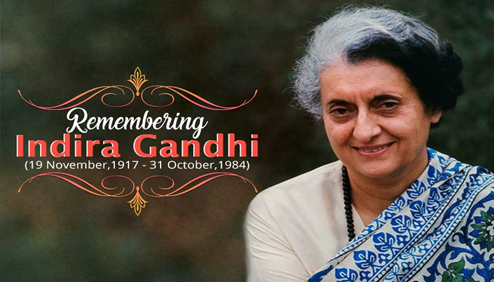
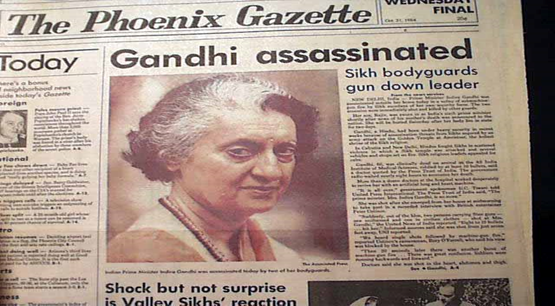






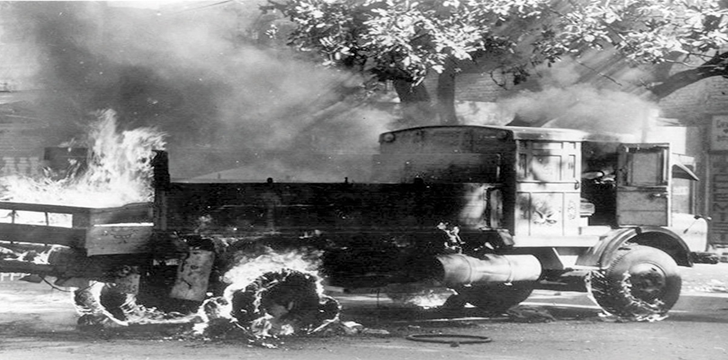

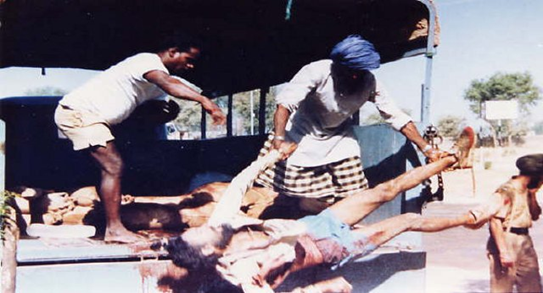
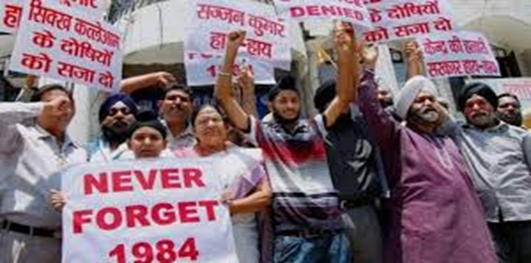




Comments
Post a Comment